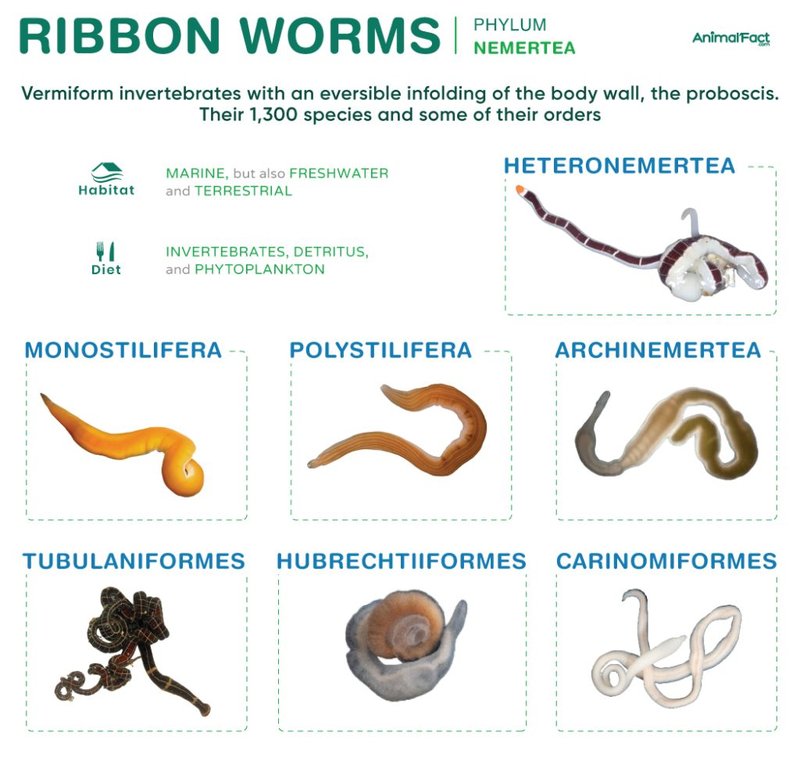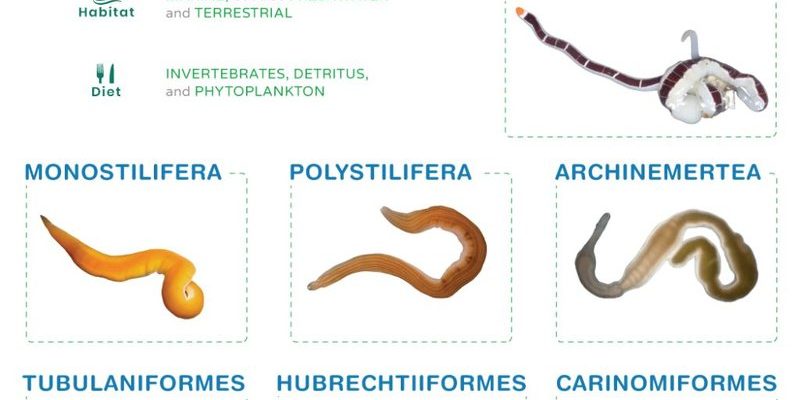
Let’s dive into their world, exploring what makes ribbon worms unique. You might think of ribbon worms like the ultimate stealthy detectives of the ocean, equipped with some impressive features for sensing their surroundings—even if they don’t have traditional eyes like we do. But don’t worry; we’ll unravel all the layers of this mystery together as we look at the sensory capabilities of these intriguing creatures.
What Are Ribbon Worms?
Ribbon worms belong to the phylum Nemertea, a group of long, soft-bodied worms that can stretch several feet long. Their incredible length can be deceptive; some species can measure over 30 feet—almost like a living, wriggling ribbon! They typically inhabit coastal areas, burrowing into sediments or hiding beneath rocks.
These worms are fascinating not only due to their length but also because they play an essential role in the ecosystem. As scavengers, they help break down organic materials, contributing to nutrient cycling in marine environments. You might think of them as nature’s tidy-up crew, cleaning up the ocean’s mess.
The body of a ribbon worm is divided into several regions, including a head, trunk, and tail. But how do they navigate their environments and find food if they don’t have traditional eyes?
Do Ribbon Worms Have Eyes?
Here’s the thing: ribbon worms don’t have *eyes* in the way that we typically think of them. They lack the complex structures that most animals use to see. Instead, they rely on a variety of *sensory organs* that help them detect their surroundings. As you can imagine, this is quite different from the way we perceive the world.
Most ribbon worms have light-sensitive cells scattered throughout their bodies. These cells can sense changes in light intensity, allowing the worm to detect whether it is in the sun or in shadow. It’s almost like having a simple alarm system for light levels, guiding them through the murky depths of their environments.
While they might not see in color or detail like we do, these organisms use their limited sensory abilities to avoid predators and hunt for prey. Imagine walking into a dimly lit room and being able only to feel the furniture around you—this is somewhat what life is like for a ribbon worm.
Other Sensory Organs in Ribbon Worms
Beyond their light-sensitive cells, ribbon worms have other *sensory structures* that help them navigate the aquatic world. One of the most fascinating is the presence of sensory pits along their bodies. These pits are specialized cells that help detect chemical changes in the water.
You see, when a ribbon worm senses food nearby—like small fish or other marine life—it can “taste” the water to locate it. This is similar to how we might smell a delicious dish cooking in the kitchen from another room. These sensory pits are essential for them to find nutrients and thrive in their habitats.
Additionally, ribbon worms possess structures called *rhopalia*, which are clusters of nerves and sensory cells located at the head. These structures help them pick up on vibrations and movement in the water, giving them an additional means of detecting potential threats or prey.
The Importance of Sensory Adaptations
Understanding how ribbon worms interact with their environment showcases the beauty of evolutionary adaptations. Each sensory feature plays a vital role in the worm’s survival. Imagine trying to find your way around a crowded room while blindfolded; it would be quite challenging, right? Similarly, without their sensory abilities, ribbon worms would struggle to survive in their often competitive environments.
These adaptations highlight the importance of sensory organs in organisms of all kinds. While ribbon worms may lack traditional eyesight, their unique abilities demonstrate that there are countless ways to adapt and thrive in nature.
Comparative Sensory Capabilities
Let’s take a quick look at how ribbon worms compare to other creatures. For example, many fish have well-developed eyes and can see clearly underwater, while some insects rely almost entirely on smell and touch. Ribbon worms fall somewhere in between these two extremes, equipped with basic light sensitivity and chemical detection but lacking the visual acuity of many other species.
Have you ever observed how certain animals can blend perfectly into their surroundings? Ribbon worms use their sensory abilities to stay hidden and evade predators. This ability to sense danger without clear vision is crucial for their survival, showcasing the diversity of adaptations across different species.
Understanding how ribbon worms sense their environment can also help scientists and researchers learn more about marine ecosystems. Studying these creatures may reveal more about how they contribute to the health of the ocean and interact with other marine life.
Why This Matters for Ecosystems
So why should we care about ribbon worms and their sensory capabilities? Well, these organisms play a significant role in coastal ecosystems. By breaking down organic matter, they help recycle nutrients that are essential for plant growth and other marine creatures.
Moreover, understanding how ribbon worms interact with their environment can help us monitor the health of marine habitats. If their populations decline, it might indicate broader ecological issues that need addressing. Essentially, these little worms act like canaries in the coal mine, signaling the overall health of their ecosystems.
In a world increasingly impacted by climate change and pollution, studying creatures like ribbon worms helps us appreciate the delicate balance of nature and the interconnectedness of all living things.
Final Thoughts
In conclusion, ribbon worms may not have eyes like we do, but they’re equipped with various fascinating sensory organs that help them thrive in their underwater homes. From light sensitivity to chemical detection, these adaptations allow them to interact with their environment in truly remarkable ways.
By appreciating the unique traits of ribbon worms, we gain a better understanding of their pivotal role in marine ecosystems. And the next time you see one in action, remember—they might not see the world as we do, but they certainly know how to navigate it!
As we continue to explore the wonders of nature, it’s essential to recognize the importance of all creatures, big and small. After all, every living thing has its place in the intricate web of life on Earth.

